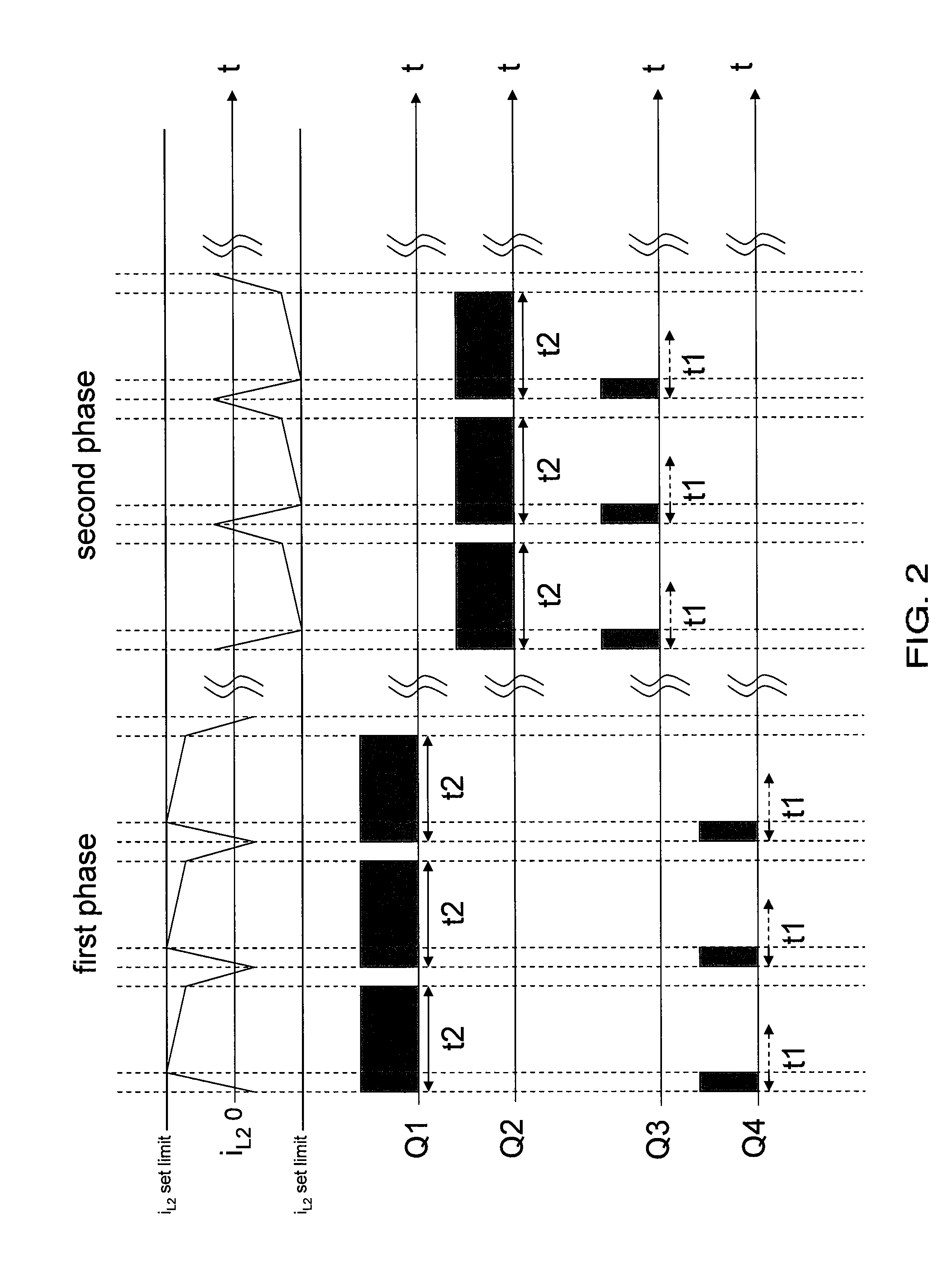Circuit arrangement for operating a discharge lamp
a discharge lamp and circuit arrangement technology, which is applied in the field of high intensity discharge lamps, can solve the problems of limited circuit voltage ocv to the output load, circuit does not provide appropriate output characteristics, and the current provided by the resonant circuit to the lamp load is usually insufficient to sustain the ar
- Summary
- Abstract
- Description
- Claims
- Application Information
AI Technical Summary
Benefits of technology
Problems solved by technology
Method used
Image
Examples
Embodiment Construction
[0044]A simplified diagram of a conventional circuit arrangement 100 for driving a HID lamp EL is illustrated in FIG. 11. In the first function (i.e., igniter function), switches Q1 and Q2 are alternately turned ON and OFF by a controller 102 at a predetermined frequency, in order to generate a resonance in a first network 104 formed by a first inductance L1 and a first capacitance C1. The resonant action of the first inductance L1 and first capacitance C1 generates a high resonant voltage across the first inductance L1. The high resonant voltage is transferred to arc tube electrodes EL1 and EL2 of the HID lamp EL to ignite the HID lamp EL.
[0045]When the ignition of the HID lamp EL is detected by the controller 102, the circuit 100 switches to the second function (i.e., buck inverter function). The second function consists of two phases. The first phase is when switches Q1 and Q4 are actively controlled to regulate power across the HID lamp EL using a second network 106 formed by se...
PUM
 Login to View More
Login to View More Abstract
Description
Claims
Application Information
 Login to View More
Login to View More - R&D
- Intellectual Property
- Life Sciences
- Materials
- Tech Scout
- Unparalleled Data Quality
- Higher Quality Content
- 60% Fewer Hallucinations
Browse by: Latest US Patents, China's latest patents, Technical Efficacy Thesaurus, Application Domain, Technology Topic, Popular Technical Reports.
© 2025 PatSnap. All rights reserved.Legal|Privacy policy|Modern Slavery Act Transparency Statement|Sitemap|About US| Contact US: help@patsnap.com



